OUTAGES
Braintree Electric Light Department
150 Potter road
781.348.BELD (2353)
Thomas Augustus Watson was the founder of BELD. Known as co-inventor of the telephone, Watson was also a leader in Braintree public education. Click on a date below to learn more about this remarkable public-spirited man.
Thomas Watson was born Jan. 18, 1854 in Salem, Massachusetts, son of a livery stable foreman and thrifty housewife. Victim of an educational system that failed to captivate the intelligent young Watson while offering few skills beyond reading, he left school as a teen to work mostly in the retail trade.
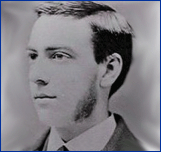
But it was at Boston’s Scollay Square District shop of Charles Williams that 18-year-old Watson learned to make telegraph and fire alarm equipment. He was rated as a skilled mechanic by the end of his second year on the job and soon was called upon by hopeful inventors to construct electrical equipment.
Soon thereafter in 1874, Watson met Alexander Graham Bell, then a young Boston University professor looking for help with his “harmonic telegraph.” Bell felt the machine could send more than one message over a wire simultaneously.
The two were working on the machine on June 2, 1875, between two rooms on the top floor of 109 Court Street in Boston, when Watson began plucking one of the transmitting reeds with his fingers. Bell suddenly burst in demanding to know what Watson had done, because he had heard the sound of the reed, which had accidentally been too tightly adjusted.
The twang Bell heard spurred them on. On March 10, 1876, the two were working on a new type of transmitter in which a wire touched diluted sulfuric acid in a metal cup. Another wire ran between two rooms at 5 Exeter Place in Boston. While Watson waited in Bell’s bedroom with his ear pressed to the receiving telephone, he was surprised to hear Bell’s voice coming from it saying, “Mr. Watson, come here, I want you!” Watson dashed down the hall and found that Bell had upset one of the acid containers and the liquid spilled on his clothes. The accident was quickly forgotten when they realized the telephone had at last spoken.
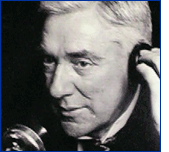
Gardiner G. Hubbard, one of the project’s investors, offered Watson a contract for a tenth interest in all of Bell’s patents. Watson accepted and devoted all his time to the development of the harmonic telegraph and the telephone.
During the summer of 1876, Bell and Watson engaged in the first actual conversation by telephone between two stations on an outdoor wire. To raise money to carry on the work, Bell and Watson presented a series of lectures to explain and demonstrate the telephone. Watson’s function was to furnish vocal entertainment that was transmitted to the hall from several miles away. He also made exhibition models of the new telephone for Bell to show at the Centennial Exposition in Philadelphia in June 1876.
With all the publicity and popularity of the new invention, it was fortunate that Gardiner Hubbard had filed the patent application. U.S. Patent No. 174,465, generally considered the most valuable patent ever issued, was granted to Bell on March 7, 1876, three days before the first transmission of the first intelligible sentence.
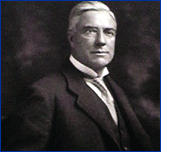
Watson was very busy for the next four years. He designed and improved early transmitters and receivers, and issued instruction books to licensees describing how to use the equipment. He testified in many legal suits, made trips to inspect installations, and continued to work on improving the equipment.
Between 1877 and 1881, Watson filed applications that resulted in about 40 U.S. patents. In the spring of 1881, Watson resigned his position with the Telephone Company. By this time, 50,000 Bell telephones existed in the United States. Except for his subsequent testimony in legal suits involving the telephone and some lectures about the invention, Watson’s telephone career was over at age 27, his interest diminished now that the pioneer work was completed.
Watson moved to a 60-acre farm in East Braintree in June 1883 with his bride, the former Elizabeth Seaver Kimball of Cohasset. The farm featured a half-mile frontage along the Weymouth Fore River, an arm of the sea.
Soon a friend told Watson about a new rotary steam engine that needed a machinist’s skills. Watson hired young machinist Frank O. Wellington to help him on the project, which was completed in the spring of 1885. The steam engine failed, however, because some of its moving parts could not be made steam-tight. Desiring to keep the machine shop open and Wellington in his employ, Watson decided to build marine engines for yachts and tug boats. The Fore River Engine Company was born and Watson brought Wellington on as a business partner.
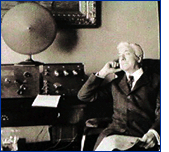
Several years later, after the battleship Maine was sunk by an explosion in 1898, the U.S. Navy gave the Fore River Engine Company a contract to build two 400-ton torpedo boats, the Lawrence and the McDonough. In November a year later, Watson’s shipyard won the contract for the 3,000-ton cruiser the DesMoines, primarily because earlier that year Watson had purchased a 100-acre site of waterfront land at Quincy Point on the Fore River, where the Fore River Shipyard operated until 1986.
While expanding his ship-building business—and during the illnesses and subsequent death of his two sons—Watson became a central figure in important town issues, namely creation of a municipally owned electric light company and improving the public school system.
Watson was appointed in 1890 to serve on a special committee to examine school building plans. He later became a member of the school committee in 1892, serving through 1910. During that time, he promoted construction of new and better school buildings to meet state standards. He also favored adding new subjects to the traditional curriculum such as sewing, cooking and carpentry. The town opened a night school in 1911.
The town benefited from Mr. and Mrs. Watson’s keen interest in kindergartens. The couple fitted up the machine shop on their property, hired a teacher, and opened a kindergarten for 12 neighborhood children. It proved such a success that the town opened kindergartens in all sections as part of the regular school system, becoming the first municipality in New England to do so.
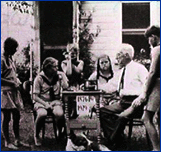
Watson’s generosity to Braintree’s public schools was legendary. At his own expense, he would sometimes hire an instructor in a special field – such as voice, culture or geology – to give special instruction to the town’s teachers. To keep a top-notch teacher in the town’s school system, which saw a consistent turnover because of poor pay, Watson would supply the teacher the difference in salary out of his own pocket. He also gave collections of rocks and minerals he had collected to Braintree schools.
Watson continued to expand his interests, even in his later years. He joined a company of touring Shakespearean players after taking theater classes at London University. He also gave public readings of the Bible, Greek drama, Browning and various American authors. In 1919, he received a master of arts degree from Union College and in 1921, a doctor of engineering degree from Stevens Institute of Technology. Watson completed his autobiography in 1926, entitled Exploring Life. At the age of 77, Watson took up art, studying under Professor Benedictis of Boston.
He died Dec. 13, 1934 at his winter home on Pass-Grille Key, Florida. He is survived by a daughter, Esther Watson Tipple, who is also survived by a daughter, Mary Tipple Cobb.
An editorial in the Dec. 28, 1934, edition of the former Braintree Observer said: “Mr. Watson lived a life replete with study, experiment, research, investigation, writing, speaking, action, in industry, education, art, science and philosophy. Truly, he lived ‘the abundant life.'”